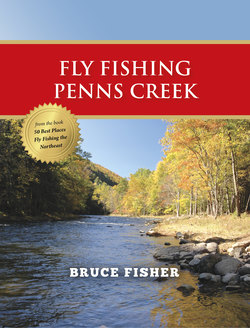Читать книгу Fly Fishing Penns Creek - Bruce Fisher - Страница 3
На сайте Литреса книга снята с продажи.
Оглавление43 . Penns Creek
Location: Central Pennsylvania, about a 1-hour ride from Harrisburg; a 3-hour ride from Philadelphia; a 3½-hour ride from Pittsburgh; and a 4½-hour ride from New York City. Full-service airports are available in all four cities.
Penns Creek has a history of cultivating some of the country’s finest anglers and writers. Charles M. Wetzel authored several books in the 1940s and 1950s that include fly-fishing and insect information specific to Penns Creek. Other notable Penns Creek regulars are George Harvey, Joe Humphries, and Charles
Meck. All have written books on fly fishing. Sadly, George is no longer with us. He leaves a legacy of teaching fly fishing to more than 36,000 students at Penn State University and other venues.
During the late 1800s, Penns was a working creek, transporting agricultural products and logs downstream to the Susquehanna River, and then to Harrisburg and beyond. Along the river were scores of mills and the dams that powered them. Fortunately, all but one of the dams have since been removed. Some of the old mills remain, adding a level of character to the creek.
Penns Creek emanates at Penns Cave, a limestone cavern located near Spring Mills. The cave releases approximately a million gallons of water per day.
Most of the upper 7 miles of creek is private. There are, however, a few small sections open to the public. The slow, gentle currents provide classic spring creek conditions. The dry-fly fishing is exceptional from here to the only dam on the creek. The dam is located about 7 miles downstream of Spring Mills. This area holds some very large wild rainbow and brown trout. The hatches are what you would expect to find on a spring creek.
A stocked section runs from the dam to where Elk Creek enters Penns Creek in the town of Coburn. This section is roughly 2 miles long. This is a park-and-fish
area, perfect for anglers looking for easy access. The creek here is about 15 to 20 feet wide. The flow is moderate. Nymphs, wets, and dries all work here. In addition to the stocked fish, there are some wild fish that migrate up from below Elk Creek.
